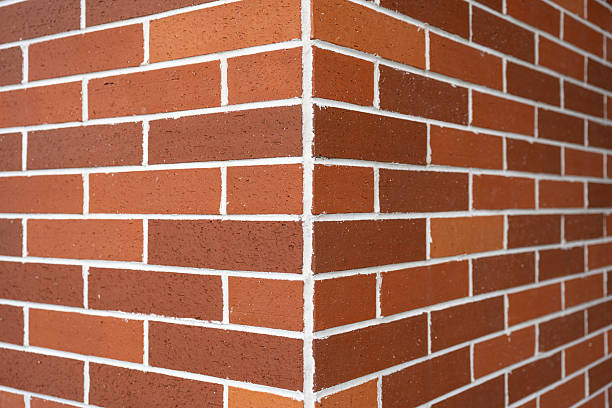
Let’s be honest. Most people don’t think much about their brick until it starts looking tired. Faded. Dirty. Maybe uneven from years of weather beating down. That’s when the question hits—paint or stain? And here’s the thing: exterior brick staining isn’t just a trendy upgrade. It’s a smarter, more natural way to bring color back to your brick without suffocating it under a layer of plastic paint. Staining works with the brick, not against it.
Why Paint Fails on Brick (And Fast)
Paint looks good—for a while. Fresh color, smooth finish, all that. But give it a few years and you’ll see the truth. Paint seals the surface, traps moisture, and blocks the brick from breathing. That moisture pushes from underneath until the paint starts to peel or bubble. Once that starts, it’s game over. You’re scraping, sanding, repainting… again. That’s the trap with paint—it hides problems instead of fixing them.
Staining Lets the Brick Breathe
Exterior brick staining works differently. It’s not about coating the surface. It’s about soaking into the pores of the brick, bonding with the mineral structure inside. That’s why the color lasts decades, not just years. It doesn’t flake, doesn’t peel. It becomes part of the brick itself. When you stain brick, you let it breathe—just as it was meant to. That breathability matters more than most people realize. Trapped moisture ruins brick over time. Stain stops that.
Enter Potassium Silicate Paint
Now, here’s where things get interesting. You’ve got another option in the mineral world—potassium silicate paint. Don’t let the chemistry scare you. It’s actually simple stuff. This paint isn’t like regular latex or acrylic. It’s made from liquid glass, minerals, and pigments that chemically bond to masonry. Think of it as halfway between a stain and a paint. It looks solid but breathes like stone. That’s the secret.

The Science Behind the Bond
Potassium silicate doesn’t just stick to the surface. It fuses. Literally becomes part of the wall. That chemical reaction—called “silicification”—turns your brick and the coating into one mineral layer. That means no peeling. No plastic film. Just color locked into the surface like it was born there. When done right, that’s a finish that lasts 20, 30, even 50 years. Way longer than any synthetic paint.
Natural Finish, Real Character
Both exterior brick staining and potassium silicate paint share one thing: they don’t hide the natural character of the brick. You still see the texture, the subtle variation in tone. That’s the beauty of masonry—it’s not perfect. It’s alive. Traditional paints flatten that look, give you that fake, sterile wall that screams “cheap flip.” Stains and mineral paints keep it real. They bring out what’s already there.
Picking Between Stain and Potassium Silicate
So which one do you pick? Depends on what you want. If you’re after a soft, translucent color that enhances natural tones—go with stain. It’s ideal for weathered or uneven surfaces that need a subtle refresh. But if you want solid, opaque coverage while still letting the wall breathe—potassium silicate paint is your winner. It’s especially good for uniform color across old and new brick or mixed materials.
Durability: Where the Money Goes
This is where it pays off long-term. Exterior brick staining can last decades with barely any maintenance. No peeling, no chipping, no thick buildup. Potassium silicate paint holds up just as strong, with the added benefit of UV and water resistance. The upfront cost is higher, sure—but you’ll save thousands down the road when you’re not repainting every five years. That’s not marketing fluff, that’s just math.
Eco-Friendly and Healthier Choice
Here’s something not many people mention—mineral stains and potassium silicate paints are about as green as you can get. No plastics, no micro-particles, no off-gassing toxins. They’re made from natural earth minerals. Safe for the crew applying it, safe for your family, safe for the planet. Try saying that about most of the latex junk on the market. You can’t.
How to Get It Done Right
Now don’t get me wrong—these aren’t DIY weekend projects unless you really know what you’re doing. Surface prep is everything. The brick’s got to be clean, dry, and free from sealants or old paint. The stain or potassium silicate paint needs to soak or bond directly with the mineral surface. That’s why hiring pros who know their stuff makes all the difference. Bad prep = bad results. Every time.

The Look That Lasts
When you step back after a proper exterior brick staining job or a silicate paint application, it’s different. It doesn’t look “painted.” It looks like the brick was always that color. The finish has depth, life. And you won’t see those ugly patches or cracks a year later. It’s just solid, lasting beauty that feels authentic. That’s what masonry deserves—respect, not a quick cosmetic fix.
Final Word: Go Mineral, Skip the Plastic
If your brick needs a facelift, skip the paint aisle. Choose stain or potassium silicate paint instead. These mineral-based finishes don’t fight against the surface—they work with it. They last longer, look better, and keep your walls breathing free. Whether you go for the rich tones of exterior brick staining or the durable matte look of potassium silicate paint, you’ll be giving your home something real. Something lasting.
FAQs
What’s the difference between exterior brick staining and painting?
Painting coats the surface, while staining penetrates into the brick. Paint traps moisture and can peel, while stain lets the wall breathe naturally.
How long does potassium silicate paint last?
When applied correctly, potassium silicate paint can last 20 to 50 years without peeling or fading. It chemically bonds with the masonry, creating a permanent mineral layer.
Can I apply potassium silicate paint over old latex paint?
No. It needs direct contact with mineral surfaces. Old paint must be removed completely before application.
Is brick staining better for older homes?
Yes. Staining preserves the original character of older brick while giving it renewed color and protection. It’s ideal for historic restorations.
Does exterior brick staining require maintenance?
Minimal. Unlike paint, which needs touch-ups every few years, stain can last decades with simple cleaning as needed.
Can I mix stain and potassium silicate paint on the same project?
You can, in certain cases. For example, stain on natural brick areas and silicate paint on concrete or repaired sections. Just make sure materials and colors blend naturally.
Is potassium silicate paint waterproof?
It’s water-resistant but breathable. That means it keeps rain out but allows moisture vapor to escape, preventing trapped dampness.
What’s the best color for exterior brick staining?
Earth tones work best—charcoal, sandstone, taupe, or soft grays. These blend naturally with brick texture and age well over time.
